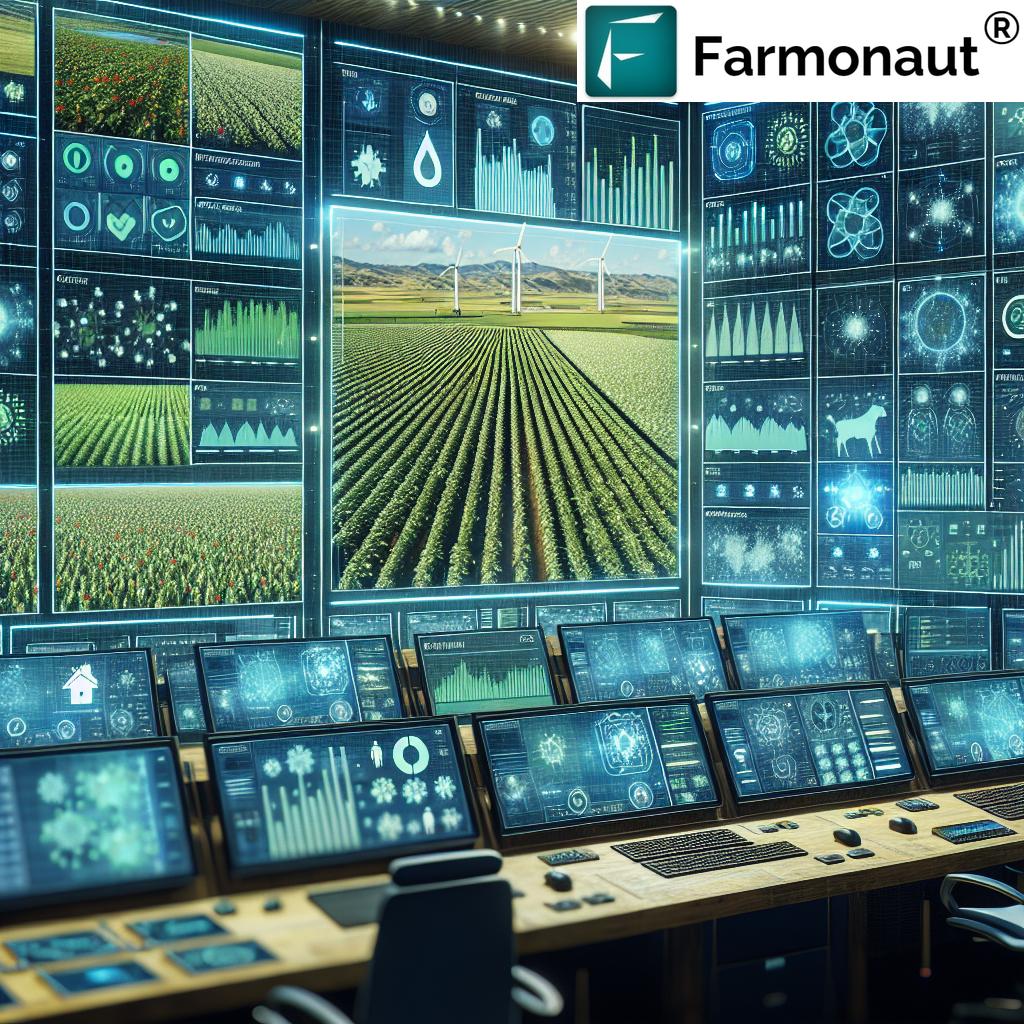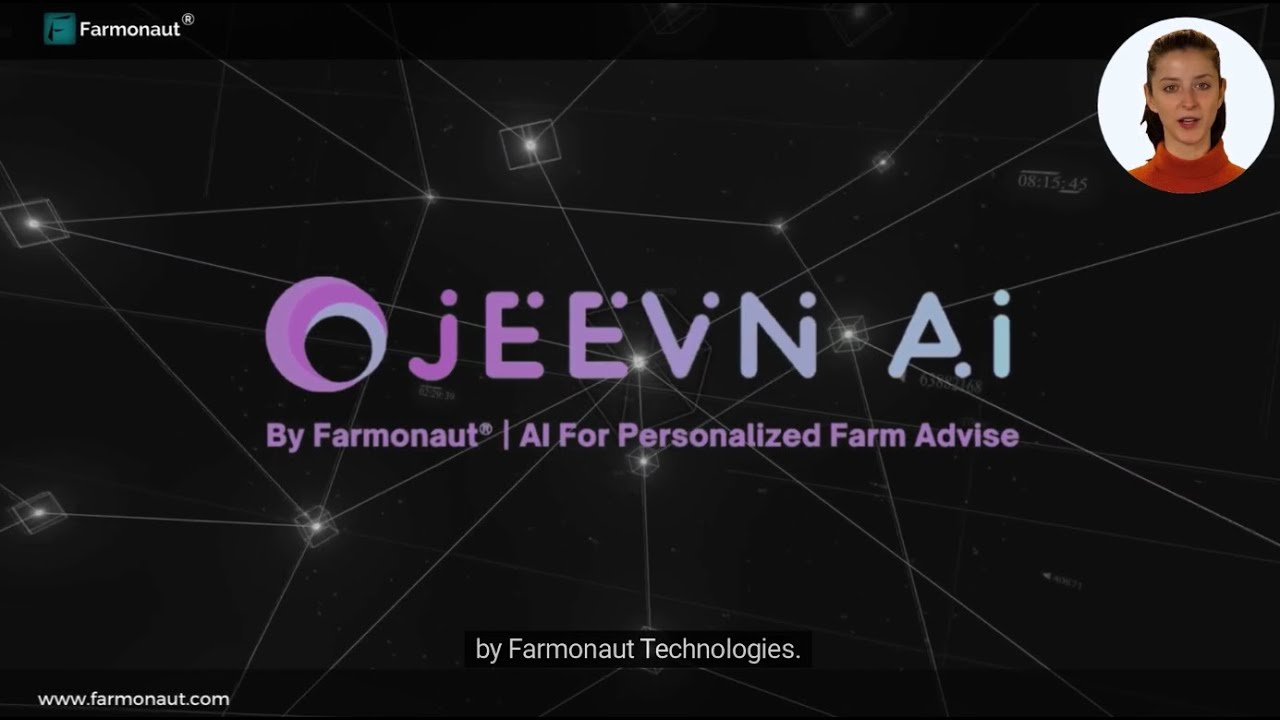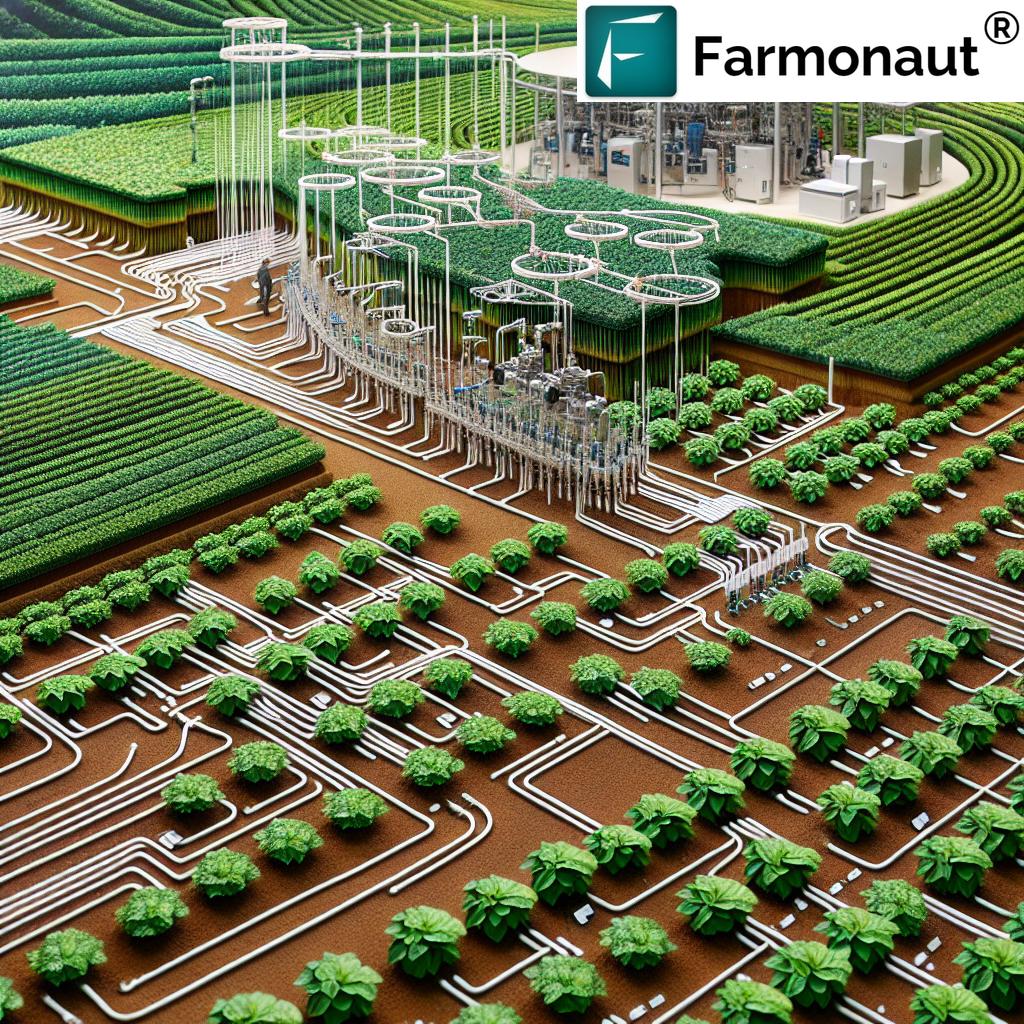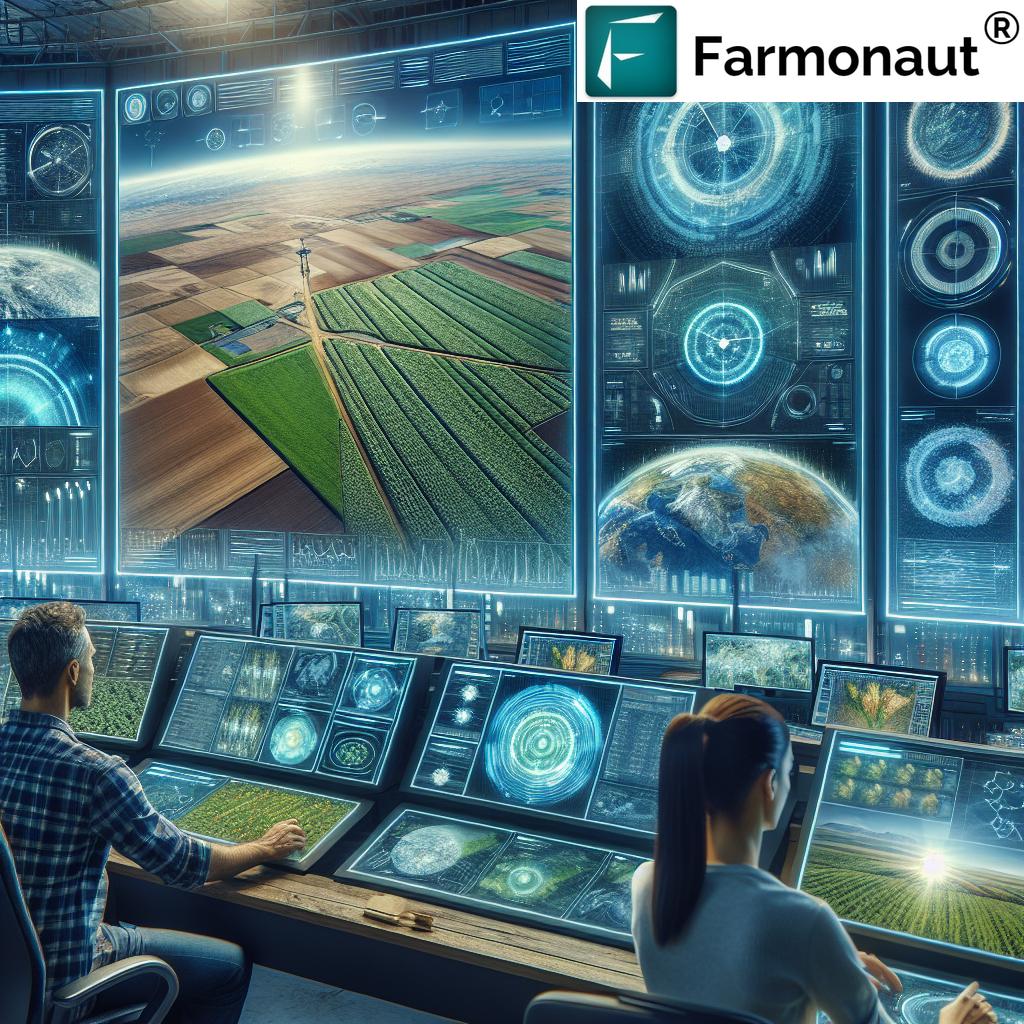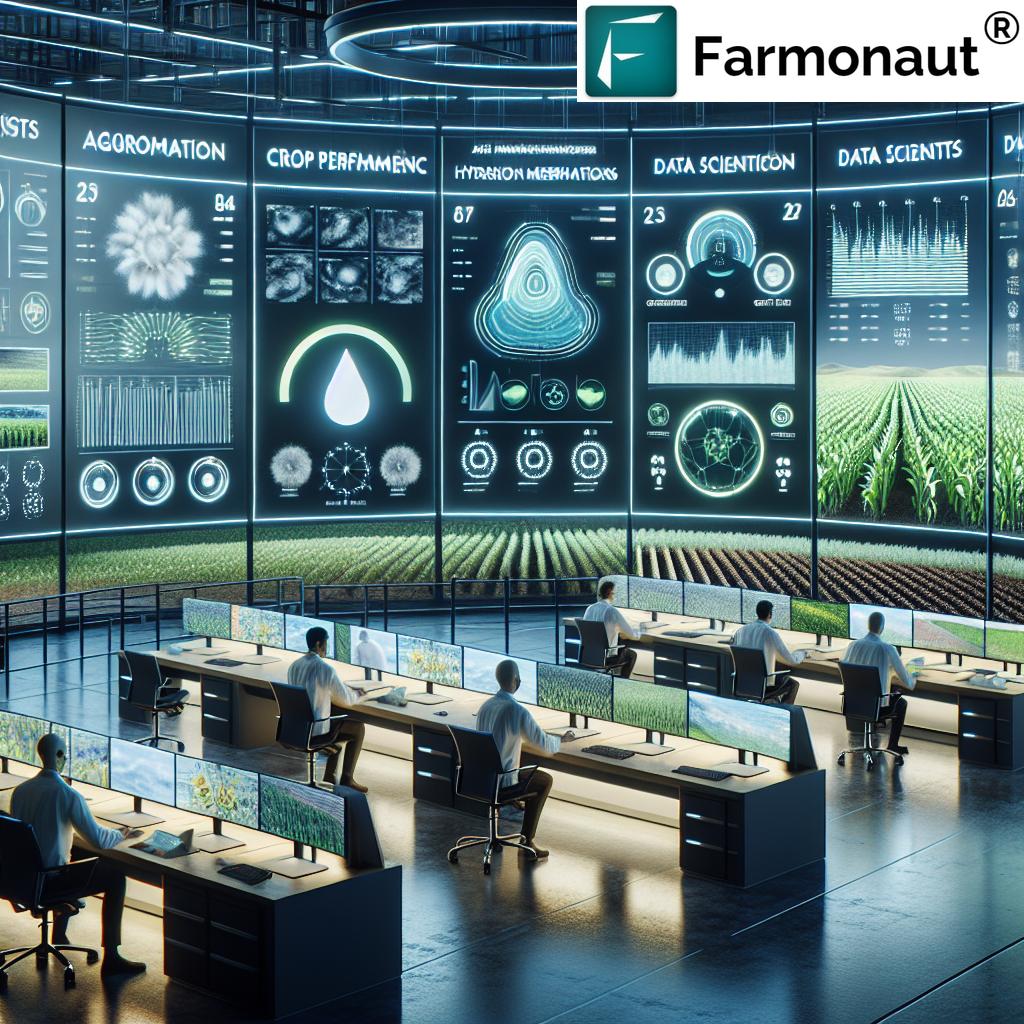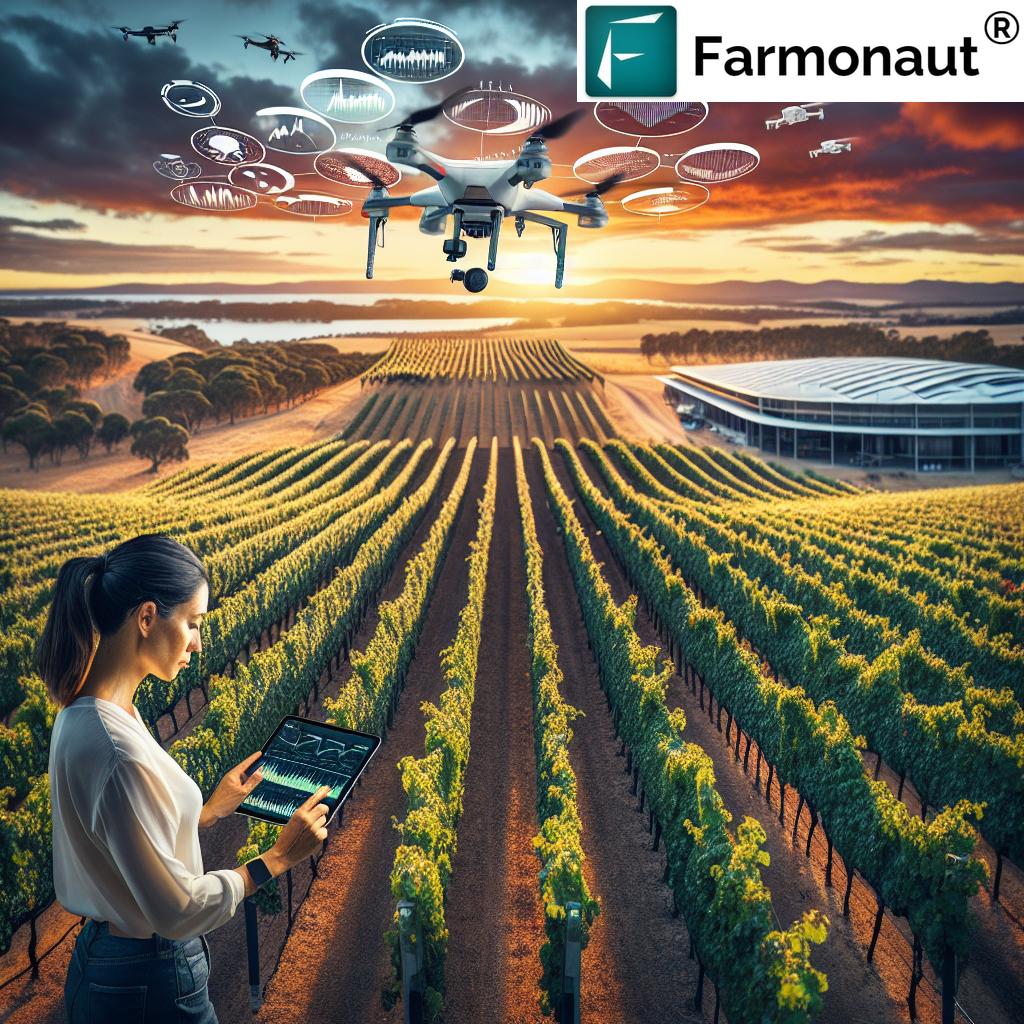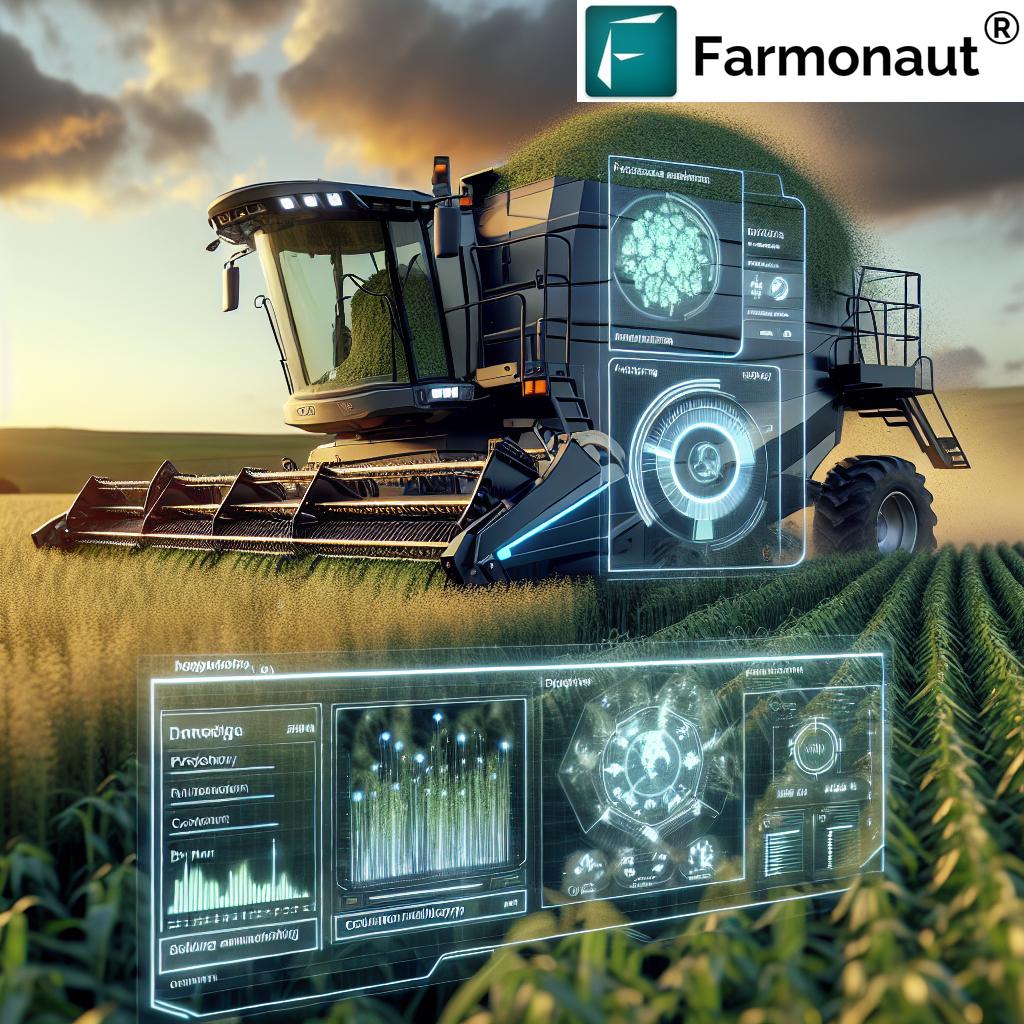Table of Contents
- Introduction
- Understanding AI in Agriculture
- Why Integrate AI into Farm Management?
- 7 Secrets to Integrate AI into Your Farm Management System
- How to Integrate AI into Your Farm Management System: Step-by-Step
- Comparison Table of AI Applications in Farm Management
- Challenges and Considerations
- Farmonaut: Pioneering AI-Driven Farm Management Solutions
- FAQ: AI in Farm Management
- Conclusion
“Over 70% of farmers using AI report improved crop health monitoring and faster data analysis in farm management.”
How to Integrate AI into My Farm Management: 7 Secrets
Our world’s farms are at a critical turning point. As the demand for food rises and environmental challenges intensify, modern agriculture and innovative farm management systems are essential for our planet’s sustainability and prosperity. At the heart of this agricultural revolution lies artificial intelligence (AI)—a collection of advanced technologies and data-driven solutions that promise to elevate every aspect of farming operations, from crop health monitoring to supply chain optimization.
Integrating AI into your farm management system isn’t just a future trend; it’s today’s most powerful pathway to greater crop productivity, real-time insights, and truly sustainable farming practices. In this comprehensive guide, we’ll show you how, exploring the “7 Secrets” of successful AI integration, demystifying the workflow, and introducing you to the cutting edge with platforms like Farmonaut.
Understanding AI in Agriculture
AI in agriculture refers to the use of machine learning algorithms, data analytics, automation, and innovative software to analyze agricultural data, optimize resource use, and enhance decision-making. These systems process vast datasets, identifying patterns and providing actionable insights faster and more accurately than traditional methods.
- Artificial intelligence (AI): Computer systems capable of analyzing, predicting, and acting on agricultural data.
- Machine learning (ML): A subset of AI, allowing farming systems to “learn” from vast data sets—for example, predicting crop diseases from satellite or drone images.
- Automation: Automates repetitive or complex tasks such as irrigation, fertilization, pest detection, or crop health monitoring.
- Integration: Seamlessly connects sensors, IoT devices, weather forecasts, and satellite imagery with your existing farm management system.
By embracing AI integration in farming, we can achieve:
- Efficient resource utilization—using exactly the right amount of water, fertilizers, and pesticides where needed.
- Optimized yields and minimized losses, thanks to predictive and real-time crop health monitoring.
- Reduced environmental impact through smarter, targeted farming practices.
- Lower operational costs and fewer manual interventions with automation.
Why Integrate AI into Farm Management?
Let’s address the core question: Why should we integrate artificial intelligence into our farm management system?
- Productivity: AI-driven analytics enhance crop monitoring, leading to higher yields and informed decision-making.
- Sustainability: Precision farming solutions help us conserve water, minimize waste, and reduce chemical overuse—key for sustainable agriculture.
- Profitability: AI-powered supply chain optimization in farming reduces post-harvest losses, improves market timing, and boosts returns.
- Adaptability: Advanced sensors, remote sensing, and data collection ensure we’re responsive to changing weather, soil conditions, and threats.
- Accessibility: Platforms like Farmonaut put cutting-edge technologies in the hands of every farmer, from smallholders to large agribusinesses.
“AI integration in agriculture can increase sustainable farming efficiency by up to 30%, according to recent studies.”
7 Secrets to Integrate AI into Your Farm Management System
Let’s break down the seven key areas where integrating artificial intelligence in farming yields the most powerful results. These integration “secrets” will show you how AI can elevate every part of your agricultural operation.
1. Precision Farming Solutions: Targeted Resource Application Using AI
Precision farming is the backbone of modern sustainable agriculture, and it’s impossible to discuss without mentioning AI and remote sensing. AI collects, analyzes, and interprets information from sensors (soil, moisture, weather, etc.), satellite imagery, and historical farm data—delivering targeted recommendations for water, fertilizer, and pesticide application.
-
Soil Sensors & Satellite Data:
Platforms like Farmonaut deliver field-specific information using real-time NDVI, soil moisture, and thermal maps. -
Resource Optimization:
AI-powered irrigation systems automatically detect soil dryness, weather forecasts, and plant needs to minimize water and fertilizer wastage. -
Benefits:
– Reduces costs by optimizing resource use
– Increases yield and produce quality
– Results in lower environmental impact
This method helps us reduce inputs—conserving water, lowering costs, and minimizing run-off and environmental impact while maximizing yields.
2. Real-Time Crop Health Monitoring with AI
Crop health monitoring has instantly become more effective thanks to artificial intelligence and high-resolution imagery. With AI-integrated systems such as Farmonaut’s satellite-based platform, we can access up-to-date, unbiased overviews of crop health and vitality across entire fields, or down to micro-plots.
- Image Analysis: AI algorithms analyze satellite and drone imagery to identify patterns, subtle discolorations, or signs of disease and nutrient deficiencies.
- Early Detection: Spotting pests or diseases before symptoms are visible to the naked eye, enabling prompt intervention and reduced crop losses.
- Actionable Insights: Receive instant, personalized advice (like from Farmonaut’s Jeevn AI tool) tailored to our crop, location, and season: when to act, what to apply, and how to mitigate risks.
For those managing large or multiple farms, satellite-based crop health monitoring means any changes in plant health can be detected remotely and in real time, without time-consuming manual checks.
Discover AI-powered crop plantation and forest advisory from Farmonaut to unlock the full potential of your fields—right from your smartphone or computer.
3. Livestock Management Technologies: Enhancing Animal Health and Productivity
Livestock production becomes much more efficient and humane thanks to AI-powered sensors and animal data analytics. With modern wearable devices (smart collars, ear tags, and implanted chips), our livestock’s vital signs, location, movement, feeding, and health status can be continuously monitored.
- Health Monitoring: Machine learning algorithms analyze changes in animal behavior or vital signs to detect illnesses or distress early, reducing risk of disease spread and losses.
- Productivity Tracking: Optimize feeding schedules, breeding cycles, and weight gain patterns, increasing productivity per animal and supporting animal welfare.
-
Fleet & Resource Management:
Advanced fleet management solutions help us track vehicles and machinery used in livestock operations, reducing operational costs and maximizing efficiency.
This translates into better animal health, higher yields in meat, dairy, or eggs, and reduced costs across livestock-focused farms.
4. AI-Powered Supply Chain Optimization in Farming
Post-harvest, a huge part of our farm’s profitability and sustainability is determined by how efficiently our products travel to their final destination. Supply chain optimization with AI helps us:
- Predict Market Demand: Analyze past sales, market trends, and consumer behavior to optimize harvesting schedules and reduce product wastage.
- Intelligent Logistics: AI-driven fleet and logistics management optimizes routes, reduces costs, and ensures timely delivery.
- Inventory & Quality Control: Machine learning models monitor storage conditions and shelf life, enhancing quality and safety.
Modern tools also enable blockchain-based traceability for full visibility from farm to consumer—crucial for food safety, compliance, and building consumer trust.
5. Autonomous Farm Machinery: Automation and Robotics
Imagine tractors, drones, and harvesters that perform repetitive or complex agricultural tasks with little to no human intervention. Autonomous farm machinery uses AI, GPS, and a network of sensors to:
- Automate Planting, Plowing, and Harvesting: Machines follow optimal routes and adapt actions based on real-time data.
- Reduce Labor Costs & Risk: Fewer manual hours, lower risk of injury, and the ability to work precisely at scale.
- Consistent Quality: Automated equipment applies inputs consistently, resulting in uniform crops and predictable yields.
For those seeking higher scalability and efficiency, automation of farm operations is one of the game-changers in agricultural innovation.
6. Data Infrastructure & Agricultural Data Analytics
AI and analytics are only as powerful as the quality, scope, and frequency of the underlying data collected. Building a robust data infrastructure, including IoT sensors, weather stations, and remote sensing devices, is essential.
- Comprehensive Data Collection: From soil moisture to crop biomass, resource usage to market prices—every metric is gathered, analyzed, and stored securely.
- Powerful Insights: Agricultural data analytics platforms like Farmonaut crunch this data, identifying patterns and trends we wouldn’t spot manually.
- Predictive Analysis: Machine learning enables us to predict pest outbreaks, yield fluctuations, water shortages, or nutrient deficiencies—weeks before they become critical problems.
High-quality data doesn’t just inform AI; it ensures every advisory, forecast, and automation is more accurate and trustworthy.
7. Blockchain & Product Traceability for Transparency and Trust
When integrated with AI, blockchain technology delivers an immutable record of every stage in our products’ journey—from planting to harvest, processing, storage, and retail.
- Enhanced Food Safety: Instantly trace batch histories in case of contamination or quality concerns.
- Fraud Reduction: Prevent counterfeit or substitution by verifying authentic produce origins.
- Market Access: Open new market channels by proving compliance, origin, or certifications (especially for organics).
Farmonaut’s blockchain-based traceability platform ensures supply chain transparency for agri-businesses, corporate buyers, and consumer-facing brands.
Learn more about product traceability on Farmonaut.
For API-based access and to power your own systems:
Farmonaut API |
Developer Docs
Comparison Table of AI Applications in Farm Management
To help you compare the tangible benefits across major AI applications, here’s a table outlining the primary impact areas, estimated improvements, technology explanations, and adoption levels.
| AI Application Area | Estimated Benefit (%) | How AI Works | Adoption Level |
|---|---|---|---|
| Precision Farming Solutions | 15-25% reduction in input costs; up to 20% yield improvement | AI analyzes soil, weather, and crop data for targeted resource use | High |
| Real-Time Crop Health Monitoring | Up to 30% reduction in crop losses | AI detects diseases, pests, stress from satellite/drone imagery | High |
| Livestock Management Technologies | 10-20% improvement in animal productivity; reduced losses | Sensors track health, feeding, movement for proactive care | Medium |
| Supply Chain Optimization | 5-10% increase in marketable produce; reduced waste | AI predicts demand, optimizes logistics, minimizes spoilage | Medium |
| Autonomous Farm Machinery | Up to 40% labor saving; improved efficiency | Robotics/autonomous vehicles automate repetitive fieldwork | Medium |
| Data Infrastructure & Analytics | 20-30% improved decision accuracy | Real-time analytics drives insights and predictive models | High |
| Blockchain & Traceability | Enhanced transparency, reduced fraud, up to 50% audit time saved | Blockchain records and verifies entire supply chain data | Low (rapidly increasing) |
How to Integrate AI into Your Farm Management System: Step-by-Step
Successfully integrating AI into your farm management system isn’t just about adopting new tools—it’s about reshaping your agricultural strategy for the digital era. Here are the essential, actionable steps:
-
Assess Your Current System & Needs
Review existing farms, fields, infrastructure, and data collection methods. Identify bottlenecks, gaps, and areas for AI-driven improvement (e.g., crop health, animal monitoring, supply chain logistics). -
Set Clear, Measurable Objectives
Whether your goal is to lower water usage, raise crop yields, enhance product traceability, or automate machinery, clear objectives drive successful implementation and ROI measurement. -
Choose the Right AI Technologies & Solutions
Select platforms that fit your operational scale and existing technology—like Farmonaut’s affordable satellite-based precision agriculture tools for all farm sizes or their large-scale farm management solutions for bigger enterprises. -
Invest in Data Infrastructure
Implement advanced sensors, robust connectivity (IoT, WiFi), and reliable data integration systems so AI models receive high-quality, timely data. -
Train Your Team
Regularly upskill staff on AI operation basics, app navigation, troubleshooting, and interpreting data-driven reports—fostering smooth digital transformation. -
Monitor, Evaluate & Iterate
Continually track performance metrics, yield, resource usage, and financial outcomes. Use this feedback to fine-tune AI settings and scale up as needed. -
Ensure Data Privacy, Security, and Compliance
Adopt platforms that prioritize encrypted storage and access controls, such as blockchain-based record-keeping, to safeguard sensitive agricultural and personal data.
Challenges and Considerations in AI Integration
The advantages of AI in agriculture are undeniable. However, as with all transformative technologies, there are important challenges and considerations:
- Initial Costs: High setup costs for sensors, connectivity, and software may be a hurdle—though platforms like Farmonaut substantially lower upfront investment by using satellite data instead of expensive hardware.
- Data Privacy & Security: Most AI systems rely on collecting and transmitting sensitive farm information. Always adopt robust security measures (including blockchain) and check compliance with local data protection laws.
- Technical Expertise: Ongoing training and support are crucial, especially when new processes or technologies are introduced.
- Scalability: Ensure your AI or data solution can handle expanding operations, new crops, or regulatory requirements without costly overhauls.
- Internet Connectivity: Reliable access is necessary for cloud-based AI solutions; rural areas may need satellite or hybrid alternatives.
- Quality of Data Inputs: Poor or inconsistent data will undermine even the best AI algorithms—so invest in sensor calibration and integration.
The right provider will always help you navigate these hurdles and provide cost-effective, scalable solutions for your needs.
Farmonaut: Pioneering AI-Driven Farm Management Solutions
When it comes to actual, affordable, and scalable AI integration in agriculture, Farmonaut stands at the frontier. Its focus is making high-tech farming and precision agriculture accessible for every farmer, globally. Here’s what makes it unique:
-
Satellite-Based Crop Health Monitoring:
Leverages NDVI and multispectral indices for real-time, remote analysis—no expensive drone or field sensors required. -
Jeevn AI Advisory System:
Personalized crop and irrigation advice delivered instantly—powered by AI analysis and real-time data, maximizing productivity and minimizing waste. -
Blockchain-Enabled Traceability:
End-to-end record of input use, logistics, harvest, and product journey for food safety and supply chain trust. -
Fleet & Resource Management:
Optimize use of farm machinery and vehicles, lowering fuel and labor costs while increasing operational efficiency.
Explore Farmonaut’s Fleet Management Tools. -
Carbon Footprinting:
Real-time tracking to minimize environmental impact and support compliance and certification processes.
Learn more about Carbon Footprinting by Farmonaut. -
Flexible, Accessible App or API:
Available on web, Android, and iOS. For enterprise integration, use the API (with full developer docs).
Whether you’re an individual farmer, agribusiness, cooperative, or government agency, Farmonaut adapts and scales—delivering AI-driven insights, automation, and supply chain transparency.
Ready to experience next-gen precision farming?
FAQ: AI in Farm Management
Q. How does AI in agriculture improve crop yields?
AI enables precision farming solutions—analyzing weather, soil, and satellite data to optimize resource usage (water, fertilizers, pesticides), predict threats, and deliver timely crop health monitoring. This targeted approach increases yields while reducing waste and environmental impact.
Q. What types of farms benefit most from AI integration?
AI is scalable and flexible—benefitting smallholders and large agribusinesses alike. Platforms like Farmonaut use satellite data, making advanced technology accessible and affordable for farms of all sizes.
Q. Is my data secure with AI-based farm management systems?
Data privacy and security are top priorities. Solutions with blockchain traceability, like those on Farmonaut, provide end-to-end, transparent, and tamper-proof records. Always choose platforms that use encrypted storage and meet compliance standards.
Q. Do I need to install expensive hardware to get started?
Not necessarily. Many modern platforms (including Farmonaut) deliver AI-powered insights via satellite imagery, apps, and cloud dashboards, with minimal on-ground devices required. This makes setup more cost-effective and scalable.
Q. What is Farmonaut’s main value for farm management?
Farmonaut combines satellite-based crop health monitoring, AI-driven advisory, resource and fleet analytics, and blockchain-enabled traceability—offering a comprehensive, affordable precision agriculture platform for farmers, agribusinesses, and supply chains.
Q. How do I get started with Farmonaut?
Download the web app, Android or iOS app, or access detailed developer tools via Farmonaut’s API docs here.
Conclusion: The Future of Farm Management Is Artificial Intelligence
Integrating AI into your farm management system is not merely a technological step forward; it is the foundation of smarter, more sustainable, and more profitable agriculture. Whether through satellite-based crop health monitoring, real-time data analysis, or supply chain transparency, AI solutions empower us to make the right decisions, at the right time, for the best outcomes.
Platforms like Farmonaut exemplify how innovative, accessible technology can put the power of artificial intelligence into every farmer’s hands—regardless of scale or geography. With focus on efficiency, sustainability, and reliable insights, our farms are more resilient and prosperous than ever before.
Join us at the forefront of the AI-powered agricultural revolution—enhance your farm management system for the challenges (and opportunities) ahead.


